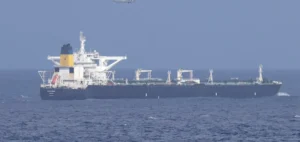US climate envoy John Podesta is in China this week for talks with his counterpart Liu Zhenmin.
The meeting, focusing on climate cooperation, comes against a backdrop of tensions between the two world’s largest economies, which remain the world’s biggest emitters of greenhouse gases.
Discussions are aimed at clarifying the two countries’ respective approaches to emissions reduction and exploring avenues for cooperation ahead of COP29, scheduled for November in Azerbaijan.
Climate cooperation remains one of the few areas of possible dialogue between Washington and Beijing, despite differences over trade issues, regional security and the situation in Taiwan.
Podesta’s visit follows on from exchanges in Washington last May, and is part of ongoing efforts to find common ground on critical energy transition issues.
Sticking points on methane and reduction targets
The United States and the European Union have signed a global commitment to reduce methane emissions by 30% by 2030, an initiative that China has not joined.
Methane, a potent greenhouse gas, is largely produced by oil and gas extraction, as well as by agriculture.
Beijing’s position remains cautious on this commitment, preferring to focus on its own energy management strategies and investments in less polluting technologies.
Despite this divergence, bilateral discussions aim to harmonize certain measures to reduce emissions, taking into account the specific economic and industrial needs of each country.
China has set a target of carbon neutrality by 2060, and is seeking to peak its emissions by 2030, while developing increased capacity in renewable energies and nuclear power.
This development has increased the share of low-carbon energies to 26.4% of the country’s energy consumption.
COP29 challenges and distribution of responsibilities
COP29, to be held in Baku, Azerbaijan, represents a key moment for the international community in terms of climate policy.
Developed countries are pressing other major emitters, including China and Saudi Arabia, to contribute financially to global climate efforts.
The central issue is the distribution of financial contributions and responsibilities in the fight against the effects of global warming.
The United States, as a key player in the climate negotiations, is seeking to keep up the pressure on the other major economies to adopt more ambitious measures.
The dialogue with China this week could determine the commitments both countries are prepared to make at COP29, thus influencing discussions on global climate financing.
Towards pragmatic cooperation despite tensions
Despite bilateral tensions, the need for pragmatic cooperation between the two giants is emphasized.
China, with its central role in global industrial production, and the USA, with its capacity for innovation and investment, can play a decisive role in the global energy transition.
Industry experts are keeping a close eye on this meeting, considering that the outcome of the discussions could influence the investment and development strategies of companies in the energy sector.
The initiatives taken by the two countries have direct implications for energy markets, industrial policies and environmental regulations.
In this context, the meeting in Beijing is seen as an indicator of the dynamics to come in Sino-American energy policy relations.






















